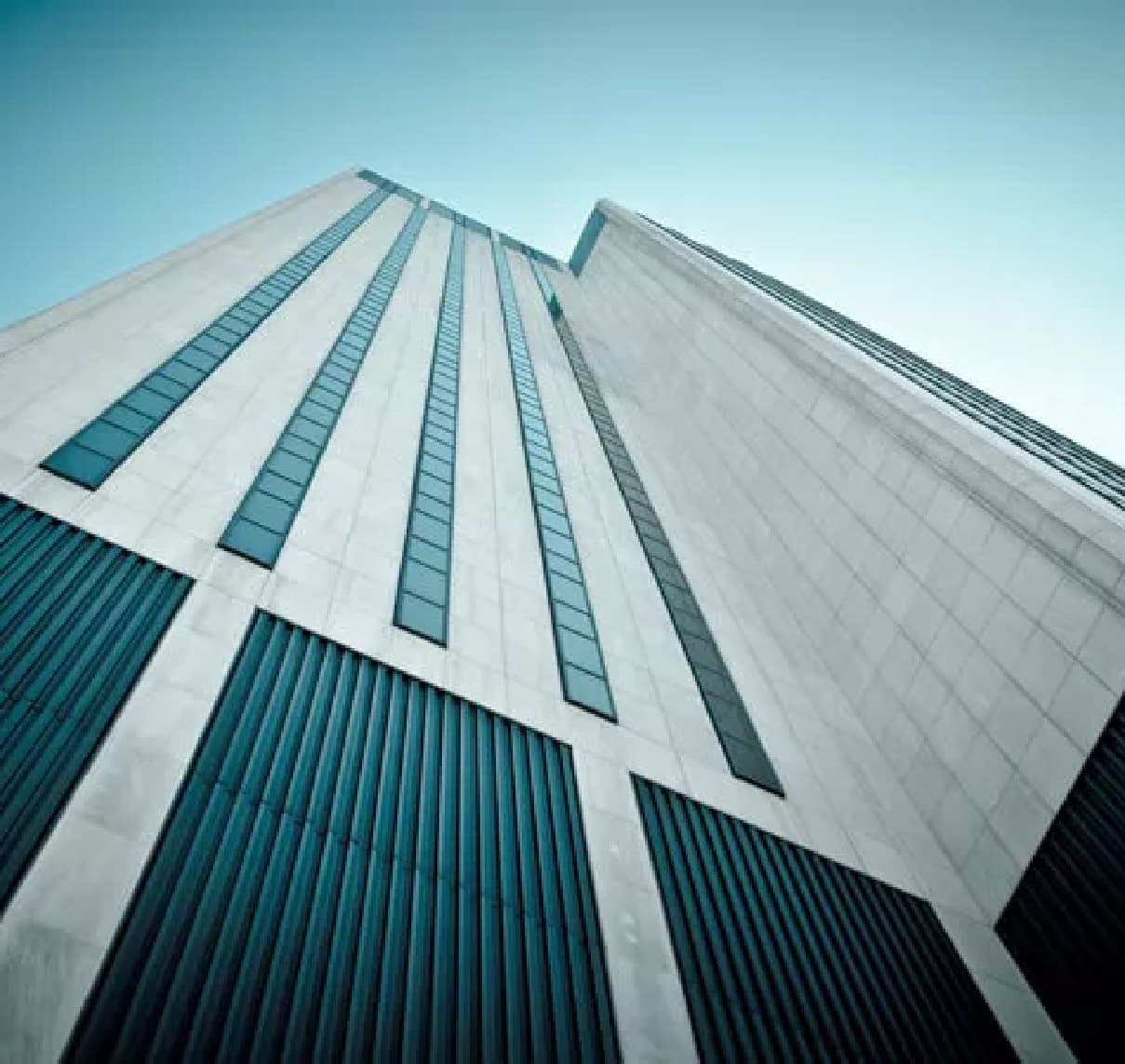Corporate Insolvency in Canada
Avoid bankruptcy and protect your employees’ jobs with our corporate insolvency services. Take back control of your business finances; call us today.
Safe, secure & confidential
Helping Canadian businesses navigate corporate insolvency
Running a business can be tough, and sometimes things don’t go to plan. If your company is facing money issues and considering corporate insolvency as an option – you’re not alone. At Harris & Partners, we understand how hard and confusing it can be to find the right solution for your business.
But here’s the good news: our team is ready to help. We’ve got professionals who know the ins and outs of business financial issues. We’ll sit with you, break things down simply, and find a way forward.
Corporate insolvency - it’s a simple process
We’ll sit down with you and really take the time to understand your unique situation. We’re here to lend a sympathetic ear and create a judgment-free, secure space where you can talk openly. To help you find the best solution, we’ll need a complete picture, including details about your income, your debts, and who you owe money to. Please know that all our consultations are both free and completely confidential.
Once we’ve grasped the full extent of your challenges, we’ll start crafting a plan. This involves carefully examining every available debt solution option, with a commitment only to what you feel comfortable with. We want to emphasize that we will never pressure you into any decisions, and our services will be tailored to fit your specific needs.
Once you are happy with the plan, we will put it into action. Your financial well-being will always be our top priority, and you can trust us to provide unwavering support and reliable guidance every step of the way, from the beginning to the end of this process. Your peace of mind matters to us.



What is corporate insolvency?
If a company doesn’t have enough money to cover its debts, (e.g.paying suppliers, creditors or employees), it’s called corporate insolvency.
When a company is insolvent, it doesn’t necessarily mean it will go out of business. There are processes and legal steps that can be taken to try to rescue the company or reorganize its debts. This might involve negotiating with creditors for more time to pay or restructuring the company’s debts to make them more manageable.
If these efforts don’t work, the company may have to stop operating and go through a formal winding-up process, where its assets are sold off to pay as much of its debts as possible.
We understand how scary and stressful this can be, but with Harris & Partners, you don’t have to face it alone.
Get in touch with our Licensed Insolvency Trustees today and we can help you find the best debt relief solution for your business.

What are your options for corporate insolvency?
Running a business can be hard. If you’re experiencing cash flow problems or rising debts, remember you’re not alone. We’ve been in business for almost 60 years – these struggles are more common than you’d think.
The good news? There are a number of debt relief options available to you. These can include:
- Informal payment arrangements
- Formal payment arrangements or corporate proposals
- Protection through the Companies’ Creditors Arrangement Act (CCAA)
- Receivership (if you are a secured creditor for a business)
- Corporate bankruptcy (though this should always be treated as a last resort)
Often, insolvent corporations and businesses will end up restructuring their debt. This can include filing a corporate proposal, instead of filing for bankruptcy.
We know how overwhelming the weight of debt can be. But this might not be the end of the road for your business. Give our team of Licensed Insolvency Trustees a call today – together, we can find the best debt solution for your business.

Division 1 Proposals
With a Division 1 Proposal, your Licensed Insolvency Trustee will make a proposal to your company’s creditors (the people you owe money to). This proposal is like a formal offer, where you settle your debts by paying off a large portion of it over an extended period of time. Like a consumer proposal, but for your business.
This will give you a structured way to manage your debt, avoid bankruptcy and work towards financial recovery. However, if it fails to be accepted by the creditors or the courts, your business will be automatically put into bankruptcy. That’s why negotiations are the key, and you need the right Trustee to help. Speak with one of our Licensed Insolvency Trustees today and we can figure out if this is a good option for your business.

Why Harris & Partners
Our Licensed Insolvency Trustees provide a customized service that could remove up to 80% of your debt and stress, so you can breathe easier.
Our multilingual team provides support in many languages, from Farsi and Portuguese to Italian and Tamil, leaving out complicated jargon, so you understand everything, every step of the way.
Want to speak to someone in person? Our team is on hand to help at a Harris & Partners office near you.

Companies’ Creditors Arrangement Act
This solution is available to businesses with $5 million or more in debt. It offers you short-term protection from your creditors, giving you a chance to restructure your business and finances, through a court driven process; think Sears, ToysRUs or Mastermind.
The first step of this process is making an application to the court to get protection. But don’t worry – you don’t have to go through this alone, our Licensed Insolvency Trustees are here to help.
Receivership
When a secured creditor, someone who lent you money with collateral, has concerns about your financial situation, they may appoint a receiver to protect their interests. This receiver is like a representative for the creditor and can take certain actions to safeguard the collateral.
In some cases, if it’s necessary or beneficial, the receiver can even run your business temporarily. For example, they might finish ongoing projects, fulfill crucial contracts, or try to get the best value by selling the business.
Receivership typically starts with a court appointment, but it can also begin through a private arrangement. The receiver’s authority comes from either a court order or a contractual agreement.

Corporate Bankruptcy
Bankruptcy is a drastic measure and should always be considered a last resort for your business. In some cases, however, it is unavoidable. If you’re worried your business has reached this point, give our team a call today. They will take the time to fully understand your unique situation before finding the best debt solution for your business. If this is bankruptcy, they will support you every step of the way.
Our Licensed Insolvency Trustees - expert insolvency support
We understand that having debts can put a real weight on your business. But don’t worry – we’re here to lend a hand. Our Licensed Insolvency Trustees have years of experience, and they’re ready to help you figure out the best way to deal with your debt.
-
![Jay-150×150-1.png Jay harris]() Jay T. HarrisFCPA, CIRP, LITLicensed Insolvency Trustee
Jay T. HarrisFCPA, CIRP, LITLicensed Insolvency Trustee -
![Kyle-150×150-1 kyle]() Kyle HarrisLL.B., CIRP, LITLicensed Insolvency Trustee
Kyle HarrisLL.B., CIRP, LITLicensed Insolvency Trustee -
![Adam-150×150-1 adam]() Adam FisherCPA, CIRP, LITLicensed Insolvency Trustee
Adam FisherCPA, CIRP, LITLicensed Insolvency Trustee -
![josh-NEW Joshua Harris]() Joshua HarrisBCOMM., MIB, CIRP, LITLicensed Insolvency Trustee
Joshua HarrisBCOMM., MIB, CIRP, LITLicensed Insolvency Trustee -
![circle-cropped-150×150-1 advisor]() David AdamsLicensed Insolvency Trustee
David AdamsLicensed Insolvency Trustee -
![doug-1.jpg (1) doug]() Doug LoiselleLicensed Insolvency Trustee
Doug LoiselleLicensed Insolvency Trustee -
![zz Rob McLernon]() Robert McLernonBComm, CIRP, LITLicensed Insolvency Trustee
Robert McLernonBComm, CIRP, LITLicensed Insolvency Trustee -
![1050_Shelley_Koehli.jpg shelley]() Shelley KoehliLicensed Insolvency Trustee
Shelley KoehliLicensed Insolvency Trustee -
![big-Picture1 (1)]() Jill StruebyLicensed Insolvency Trustee
Jill StruebyLicensed Insolvency Trustee
Corporate insolvency FAQs
How do you qualify for insolvency?
Simply put, if you owe more than your assets or business is worth, you can file for insolvency. This is done through a Licensed Insolvency Trustee who can guide you through the process, while also exploring other debt relief options that may be more manageable.
Are insolvency and bankruptcy the same thing?
No, there is a difference between bankruptcy and insolvency.
If you’re bankrupt, you’re insolvent. However, you can be insolvent, but not bankrupt. This is because bankruptcy is the process of liquidating assets to pay off a debtor’s debt. Insolvency is the point at which a company’s debts outweigh their assets.
What does insolvent trading mean?
Insolvent trading means a company is no longer able to pay its debts, but continues trading and operating otherwise normally.
How long does insolvency take?
There’s no set or legal timeframe for the insolvency process and it depends on the size and state of the business, so it can take anything from weeks to years. In general the process will take between 6 months to 2 years to complete.
Book your free corporate insolvency consultation
Corporate and business financial challenges can be complicated, but so can the solutions, and that’s where we come in. Our Licensed Insolvency Trustees are here to cut through the noise and help you find the best debt solution for your business.
Over our six decades in business we have seen a wide range of companies – everything from small independent companies, to companies with hundreds of employees and up to $200 million dollars of debt. We handle all corporate cases, and there is no business bankruptcy case we would turn away.
It's never too late to obtain debt help. Book your free consultation today
- Phone number
- 888-376-8488
- hello@harrispartners.ca
Contact form
Where you can find our corporate insolvency services in Canada
We operate across all provinces in Canada except Quebec, so help is always available at a Harris & Partners office near you.



















